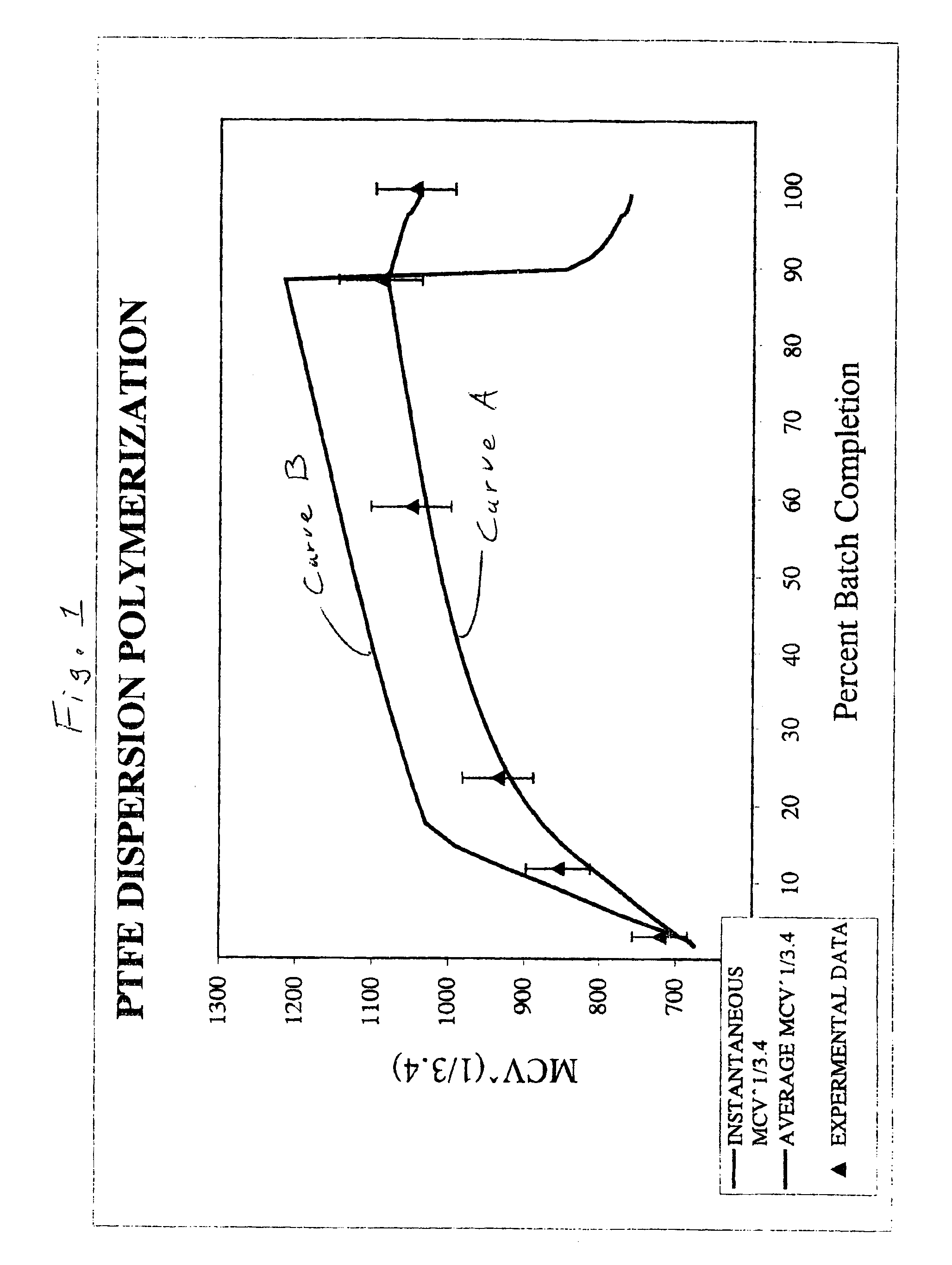Concentrated fluoropolymer dispersions
a fluoropolymer and dispersion technology, applied in the field of dispersions, can solve the problems of inability to melt process to form films and coatings, emission of volatile components from the dispersion composition, adverse environmental impact, etc., and achieve the effect of high molecular weight and high shear stability
- Summary
- Abstract
- Description
- Claims
- Application Information
AI Technical Summary
Benefits of technology
Problems solved by technology
Method used
Image
Examples
examples
[0064]Unless otherwise specified, solution concentrations are stated in weight % based on combined weights of solute and solvent water.
Preparation of Polymer Resin (core / shell)
[0065]A polykettle having a horizontal agitator and a water capacity of 240 parts by weight is charged with 123.5 parts of demineralized water and 5.82 parts of a paraffin wax supplied by Exxon. The contents of the polykettle are heated to 65° C. and the polykettle is evacuated and purged with tetrafluoroethylene (TFE). Into the evacuated polykettle is charged 3.24 parts of a solution containing 0.0616 parts of ammonium perfluorooctanoate. The contents of the polykettle are agitated at 50 rpm. The temperature is increased to 90° C. TFE is then added until the pressure is 2.72 MPa. Then 1.29 parts of a fresh initiator solution of 0.01 parts of disuccinyl peroxide and 0.00005 parts ammonium persulfate (APS) per part of water are added at the rate of 0.129 parts / minute. Once the pressure has declined by 0.1 MPa, ...
example 1
[0069]The base dispersion is thermally concentrated using Leocol SC-90 available from Lion Corporation, Japan. This surfactant is a branched ethoxylate represented by the formulas of C12H25O(C2H4O)9H and C14H29O (C2H4O)9H formed from a secondary alcohol. The surfactant is a liquid at room temperature with a viscosity of 65 cps. After adjusting the solids to 60% and the surfactant to 6% based on PTFE solids, a gel time of 850 seconds is measured.
example 2
[0070]The base dispersion is thermally concentrated using Leocol TD-90 available from Lion Corporation, Japan. This surfactant is a branched ethoxylate represented by the formula C13H27O(C2H4O)9H formed from a branched secondary alcohol. The neat surfactant is a solid at room temperature. After adjusting the solids to 60% and the surfactant to 6% based on PTFE solids, a gel time of 1241 seconds is measured.
PUM
| Property | Measurement | Unit |
|---|---|---|
| Time | aaaaa | aaaaa |
| Time | aaaaa | aaaaa |
| Time | aaaaa | aaaaa |
Abstract
Description
Claims
Application Information
 Login to View More
Login to View More - R&D
- Intellectual Property
- Life Sciences
- Materials
- Tech Scout
- Unparalleled Data Quality
- Higher Quality Content
- 60% Fewer Hallucinations
Browse by: Latest US Patents, China's latest patents, Technical Efficacy Thesaurus, Application Domain, Technology Topic, Popular Technical Reports.
© 2025 PatSnap. All rights reserved.Legal|Privacy policy|Modern Slavery Act Transparency Statement|Sitemap|About US| Contact US: help@patsnap.com


